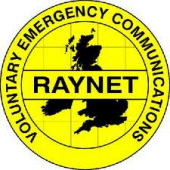 The weekend of the 7th and 8th of June 2014 was a busy one for Essex RAYNET – Three events were taking place: the Saffron Walden Essex Resilience and Community Safety Roadshow, the St Helena Hospice midnight walk in Colchester, and the Orchid Cycle Essex ride. Here’s we take a quick look at the cycle ride on Sunday, from the perspective of a new member of the Essex RAYNET team.
The weekend of the 7th and 8th of June 2014 was a busy one for Essex RAYNET – Three events were taking place: the Saffron Walden Essex Resilience and Community Safety Roadshow, the St Helena Hospice midnight walk in Colchester, and the Orchid Cycle Essex ride. Here’s we take a quick look at the cycle ride on Sunday, from the perspective of a new member of the Essex RAYNET team.
This event had two challenges for the Essex RAYNET team – a wide area to cover, and staffing the event when many members had been active for a midnight walk hours before the event.
The Orchid Cycle Ride is a charity event raising funds to help fight male cancer. It’s not just one bike ride – it’s four… 24, 40, 75 and 100 miles. The RAYNET Control point was at the start/finish line at Lake Meadows in Billericay. A primary repeater was sited centrally in Pleshey, with fill-in repeaters in Braintree and Moreton. The following map shows the location of the RAYNET stations around the four cycle routes.
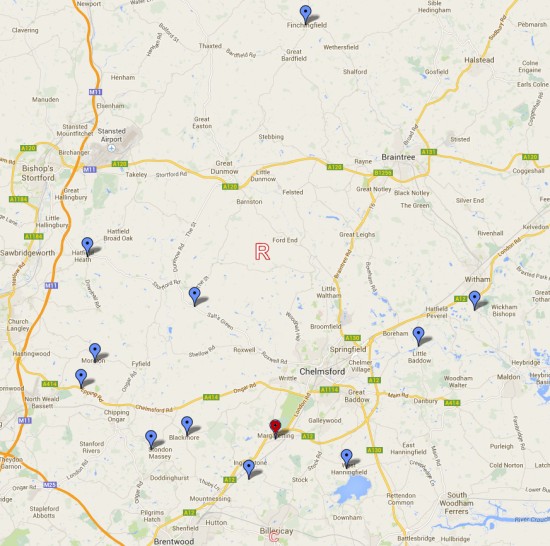
The first riders departed Billericay at 8am, so it was an early start for the team, setting up Control or heading out to the various checkpoints.
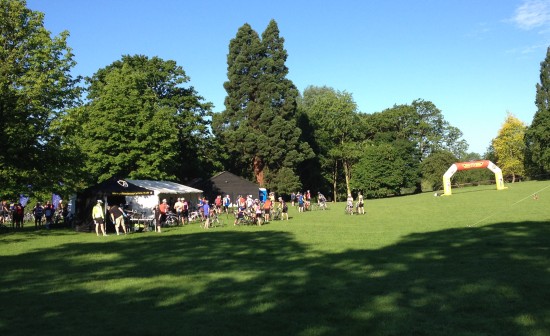
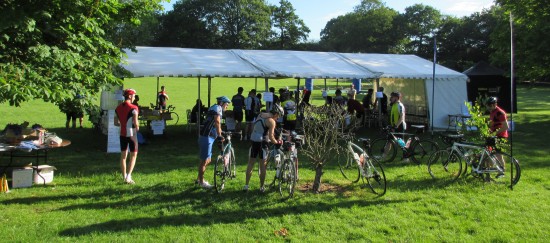
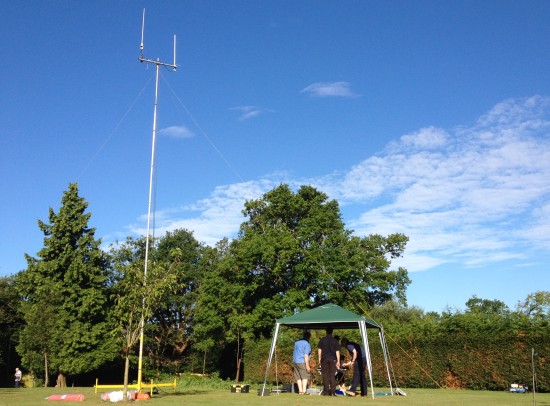
I was deployed to the Margaretting point, which was where the 20 mile and 40 mile routes split. Arriving before the marshals, I had to set up comms back to Control. Repeater coverage from this point was not great, but I was able to use a combination of my portable fishing pole (normally used for HF), together with a home-brew Slim Jim antenna, to get a 70cm antenna working and capable of contacting control. Simplex operation to Control from a handheld was also possible for comms when away from the main radio point. Two marshals arrived on site, shortly followed by a supplies for the riders – waters and bananas. Our location was 14 miles into the race and at the top of an incline, so we were a welcome sight.

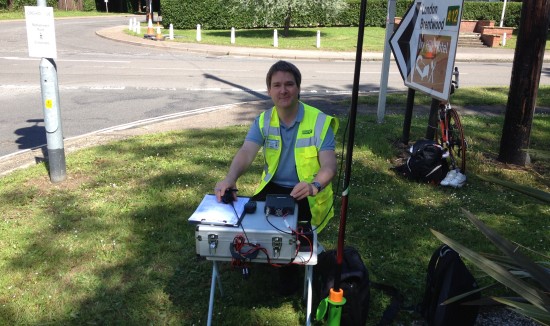
Our checkpoint was active for about 5 hours, and radio traffic form this point was relatively light – reporting the positions of the last riders, passing on information about cyclists dropping out due to mechanical failure, and the eventual shutdown of the food stop and departure of the marshals.With nine remote fixed stations and two mobile sweep vehicles, the combined amount of radio traffic was considerable.
Although some assume that mobile phones can be used to marshal events like this – where comms from RAYNET comes into its own is the sharing of information between stations – By listening to messages from previous checkpoints, I could keep the marshals at my checkpoint up to date with progress. Listening to comms from other points about road closures further along the route again meant that all stations along the way would be able to know in real-time what was happening elsewhere.
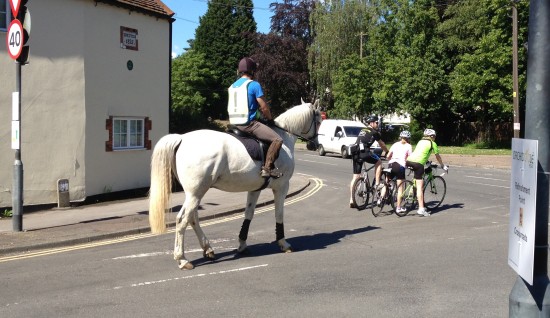
My work at the 14 mile checkpoint was done just after 1230, but the longer ride was still going strong beyond 4pm. For me, after the RAYNET sweep car left my checkpoint, it would soon be time to pack up – the sweep car followed behind the last riders to ensure that they made it to the next checkpoint – which in my case was manned by another newish recruit to RAYNET, Mark M6RKC.
After being stood down, Mark and I made our way to a local Essex Hams gathering in nearby Galleywood, to work HF. For me though, grabbing a rubber-stamp 59 QSO with a European station doesn’t compare to working on a RAYNET event – It’s great to be part of team, working together on a charity fundraising event supporting a good cause, providing a genuine service. Well done to the hardworking team at Essex RAYNET for helping to make the event a success.
If the idea of helping out with Essex RAYNET appeals, find out more at www.essexraynet.co.uk
Pete M0PSX








